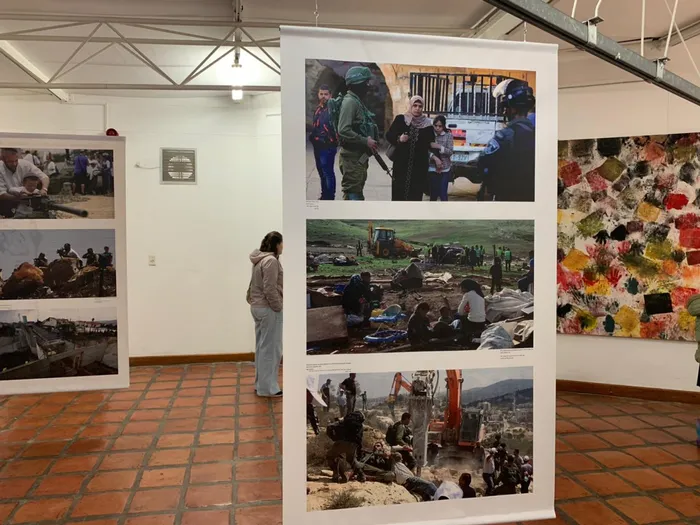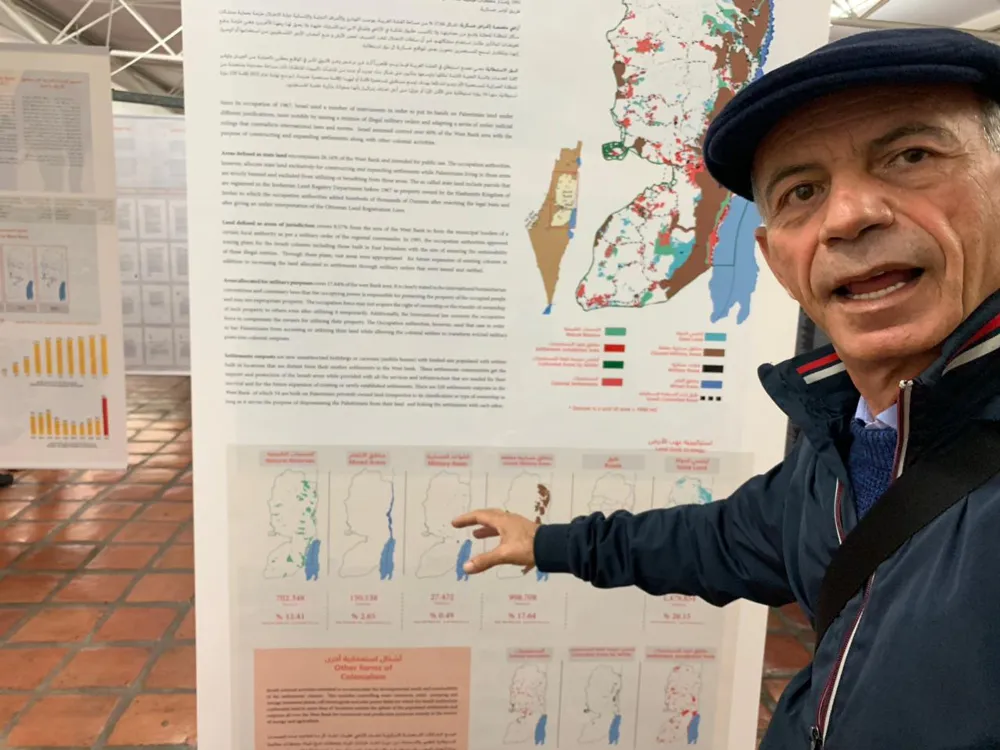Bo-Kaap Museum hosts exhibit from Palestine

The collection of the Displacement exhibition are directly from the Yasser Arafat Museum in Ramallah.
The Bo-Kaap Museum has acquired a collection of photographs, documents, videos and artworks from the Yasser Arafat Museum in Ramallah to exhibit here.
The exhibition, Displacement, narrates the story of land appropriation and displacement in Palestine and opened on Thursday August 8. It will be open to the public until March 2025, according to Lynn Abrahams, the Social History Curator of Iziko Museums.
Ms Abrahams said the South African ambassador to Palestine, Shaun Byneveldt, visited the Yasser Arafat Museum and asked if the exhibition can be shown at South African museums.
“He put me in touch with the director of that museum. These conversations happened early in 2023 but because of October 7 (the attack on Israel) it could not happen,” said Ms Abrahams.
On October 7 last year, more than 1 200 Israelis were killed in an attack by Hamas and 250 hostages were taken to Gaza.
In response, Israel has launched a 10-month long assault on the Gaza strip, which has resulted in a reported close to 40 000 Palestinians killed, most of the infrastructure destroyed and about 1.9 million people displaced, according to the United Nations.
A new round of talks to reach a ceasefire deal to end the conflict and facilitate the release of the remaining hostages taken from Israel are set to resume in either Qatar or Egypt today, Thursday August 15.
Ms Abrahams said the exhibition was supposed to open in May but was stalled due to the conflict that followed. “Part of the agreement we had with the Yasser Arafat Museum was that they bring their prints to us but it was not possible.
“I then wrote a motivation to Iziko and Iziko financed the entire exhibition and decided to bring it here.
“Everything you see here is from the Yasser Arafat Museum... except the introduction (written by Iziko) that speaks of the relationship that South Africa has with Palestine,” Ms Abrahams said.
“These are historical documents, the Nabi Samuel painting has a social history component to it, it was painted by children from that area.”
According to Mohammad Halayka, director of the Yasser Arafat Museum, the exhibition’s overall objective is to depict the reality of what is happening in Palestine.
“Through this we can show the world that the Israelis are not interested in peace and reconciliation, they want to continue with this (settlements) and they are driven by the ideology that this is the promised land and that this is their homeland.
“In the settlements mainly you will find mostly fanatics, they don’t believe that the Palestinians have a homeland, and you can see from these images how the Palestinian villages are shrinking and the settlements are growing; you can make a comparison,” said Mr Halayka.
He said the photographs and videos are factual, and that the sources are reputable and reliable when it comes to the expansion of Israeli settlements.
“The restriction of movement is getting worse, we have to go through many check-points to go from village to village or to another city and they (Israelis) close it at a certain hour.
“Every village has a gate and sometimes they just keep it closed and they control the movement of people. This is also affecting our businesses so we are facing an economic crises.”
Keith Orapella and Lauren Fox, tourists from New Jersey, USA, said the exhibition has made them more aware of the situation in Palestine.
“It’s interesting to see the parallels between what happened in South Africa and what is happening in Palestine right now. It’s sad, its terrible and horrible that people have to live this way in their homeland.
“We live in an area with lots of Palestinians and Jews and there is strife between the older groups of the generation, but the younger kids are trying to come together, they are trying to make a difference,” Mr Orapella said.
“In the United States we get a different view, we get watered-down versions of what’s happening in Palestine, I was honestly not aware of what has happened or is happening there. It’s sad, but this is truly eye-opening,” Ms Fox said.
The photographs and videos upset Ikram Ouchane and Britt Fierens, two law students from Antwerp, Belgium, on holiday in Cape Town.
“This is sad and the news we have is kind of silent on what’s happening there, but because of social media we do see more than what the news is showing us. This is Apartheid happening and people don’t seem to care,” Ms Ouchane said.
“It’s informative and I have found a new perspective. What we see on the news in Belgium is limited, we are seeing another side to this.
“We have only learnt the gist of Apartheid and what is happening in Palestine, and the news only show us updates, this is impactful,” said Ms Fierens.
Nadia Meer, the director of Shamsaan, which means two suns, brought the Butterfly Souls campaign to the museum to teach the youngsters who attend about the plight of Palestinian children.
“The butterfly is symbolic of the children in Palestine that have been killed, the butterfly does not have a long life, so that’s the meaning behind this.
“We have to simplify the meaning of the war to the children and they empathise – they select names from the list and they dedicate their butterfly to a child who was killed,” said Ms Meer.

